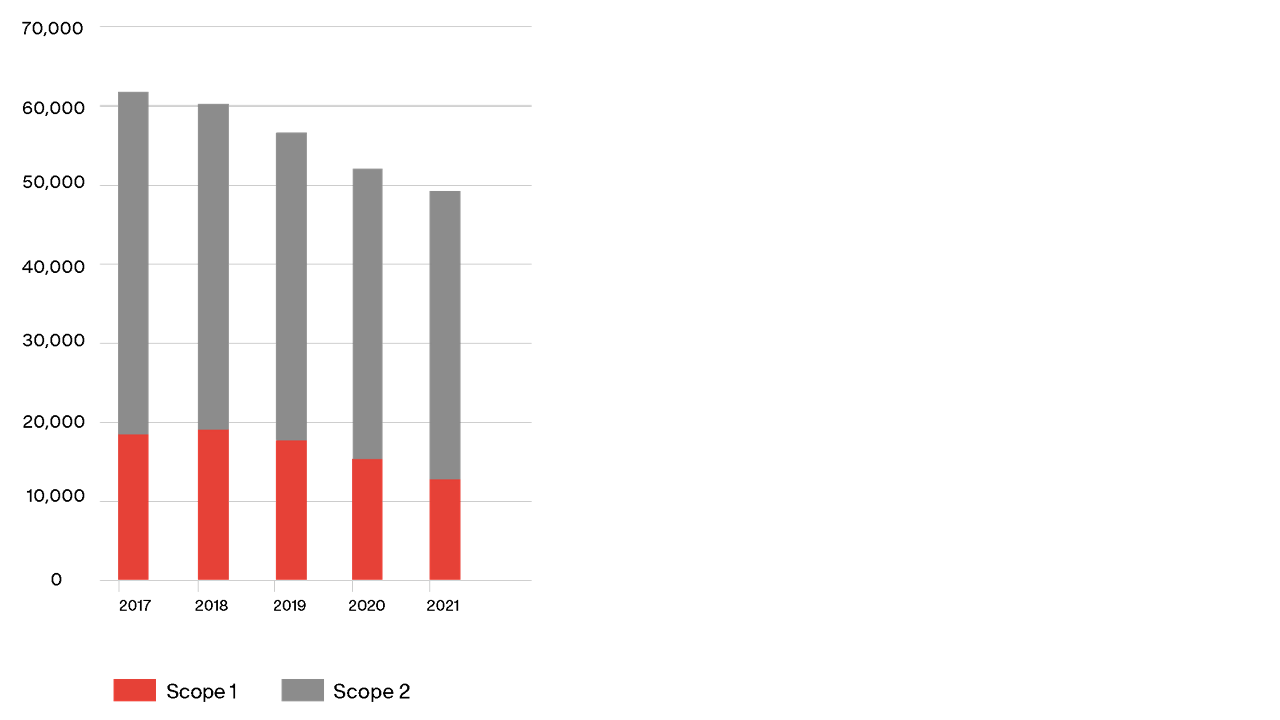Our overarching goal is to become net CO₂ neutral in production by 2030. This is achievable through managing our energy efficiency in production. These are closely aligned to our scope 3 emissions, and while water consumption is not classified within any emissions scopes outlined by the Greenhouse Gas (GHG) Protocol, it is directly related to production and is a material environmental topic for Franke.
Emissions explained
We currently estimate that around 10 percent of Franke’s emissions come from production while around 90 percent are generated upstream or downstream in the value chain. Monitoring and taking steps to reduce these scope 3 emissions is therefore vital for making progress on our climate-related goals. To develop a comprehensive inventory of our scope 3 emissions, we are following guidance developed by the Greenhouse Gas (GHG) Protocol, which categorizes greenhouse gases under the following:
Scope 1
Emissions from sources that are owned or controlled by the organization, e.g., through the combustion of fuels needed for production processes.
Scope 2
Emissions from the generation of acquired and consumed electricity, heat, steam or cooling (consumed by the organization, but generated elsewhere).
Scope 3
Emissions that occur as a consequence of the operations of the organization but are not directly owned or controlled by the organization.
Production by the numbers
In 2021, we reduced our scope 1 and 2 emissions by 22 percent from 2020 relative to net sales. The most significant proportion of our scope 1 and 2 emissions (70 percent) comes from our electricity consumption and district heating, while fuels and combustibles account for 30 percent. CO₂ emissions from fuels and combustibles fell by 16 percent in absolute terms, to 11,683 tons in 2021. CO₂ emissions from electricity and district heating fell by 3 percent, to 26,145 tons. Our goal for 2022 is to achieve a further 12.5 percent reduction in scope 1 and 2 emissions relative to net sales.
CO₂ emissions

Emissions across our value chain
In 2021, we began mapping our scope 3 inventory across our entire product value chain, together with other scope 3 emissions from employee commuting and business travel, and we have started calculating baseline data for these emission sources. These include materials and supply, products’ resource efficiency, measuring CO₂ emissions across product usage, and end of lifecycles for products. With an estimated 90 percent of our CO₂ emissions being generated outside of production, there is a vast opportunity to reduce our total emissions by focusing on our complete value chain.
Products by the numbers
One of our goals in 2022 and beyond is to obtain accurate measurements of the CO₂ emissions linked to the production of the main materials and components, and the emissions linked to their delivery to Franke production sites. We can then use this data to determine emission reduction activities upstream in our supply chain, and additionally as a baseline for setting future reduction targets.
Water and wastewater
Franke mainly uses drinking water from the public mains system and groundwater for production. The water consumption of our production sites does not represent a significant burden for water sources as defined in the GRI guidelines, although there are challenges due to a lack of water meters to help us measure our water use across all facilities.
In 2021, there were no unplanned wastewater discharges at Franke. During the planned discharges, 419,023 m3 of wastewater was released, 18 percent less than the previous year, and 30 percent less relative to net sales. We have no current targets in place for our water consumption and discharge levels, but we are looking to set targets for these in the future.

Contact the Sustainability Team
Do you have questions? Just send us an e-mail.





